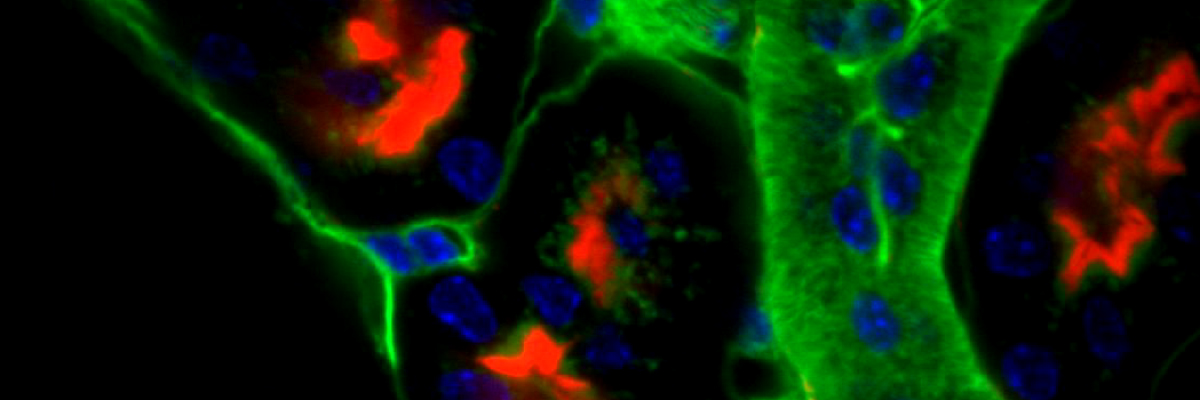
Confocal Microscopy
Fluorescence microscopy can provide rich insights into organic and inorganic samples in life science and materials sciences. A broad choice of laser wavelengths is required to match the fluorophore of interest. Confocal laser scanning microscopes (LSM) are commonly used, which can reconstruct three-dimensional images with high optical resolution and contrast.
Nowadays diode lasers and fiber lasers play a major role in modern confocal imaging instruments.
TOPTICA's offer
TOPTICA Photonics offers a wide range of laser solutions for advanced, confocal and laser scanning microscopy. High performance and low cost of ownership are combined with user-friendly design of our lasers. TOPTICA’s mission is to build lasers that simplify microscopy, making us the ideal partner for both industrial and scientific customers.
TOPTICAs diode lasers and multi-laser engines offer high beam quality, high power stability and excellent lifetime at a very economical price. In addition, our lasers and laser engines feature optimized modulation capabilities for superior performance. Microscopy-optimized laser sources reduce investment costs and optical system complexity.
Our lasers provide a diffraction-limited beam with an excellent wavefront, which is the basis for excellent resolution of confocal images. Always with the user in mind, TOPTICA has introduced unique features that make our lasers the preferred choice for the biophotonics:
Electronic features such as FINE/SKILL are used to further optimize the laser performance for microscopy applications. Modulation, as used for the line-blanking in many applications, is optimized for steady and stable illumination at different power levels. The broadened spectrum of the laser diodes helps to prevent speckle effects in the microscopy images.
As laser diodes are available at various distinct wavelengths (from 375 nm to 830 nm), researchers can select their preferred wavelength or wavelength set (iChrome MLE and iChrome FLE) without the need to compromise and allow exciting even exotic dyes (e.g. NIR dyes). Of course, TOPTICA also offers high quality, convenient single-mode and polarization maintaining fiber delivery, optimized for each wavelength.
For non-linear microscopy applications TOPTICA offers a broad variety of femtosecond fiber lasers. The FemtoFiber laser family has proven its outstanding performance and suitability for in-vivo imaging and other advanced non-linear microscopy techniques.
To achieve the best image quality, TOPTICA’s FemtoFiber ultra is equipped with Clean Pulse Technology that reduces pedestals and side-wings on the temporal pulse profile. Thus, the full laser power contributes to two-photon excitation. Clean Pulse Technology provides the highest fluorescence image brightness and contrast while thermal heating of the sample is kept to a minimum.
TOPTICA’s FemtoFiber ultra also streamlines usability: The laser includes beam conditioning to adapt the input laser beam parameters to the microscope. Firstly, software-control of the group delay dispersion (GDD) pre-compensation enables user-friendly and repeatable optimization of fluorescence signal strength. Secondly, an integrated acousto-optic modulator (AOM) enables fast power-modulation and flyback blanking in synchronization with the microscope’s beam scanner. This minimizes sample damage and photo-bleaching. Thirdly, the laser heads are extremely compact and passively-cooled, offering much lower operating and maintenance costs to competing technologies.
